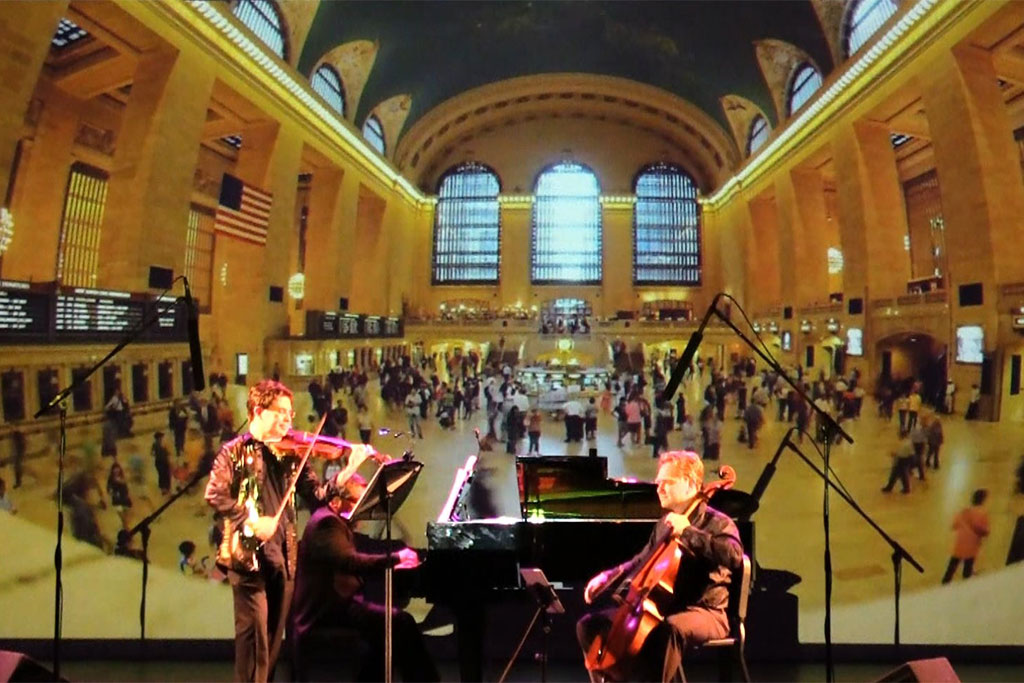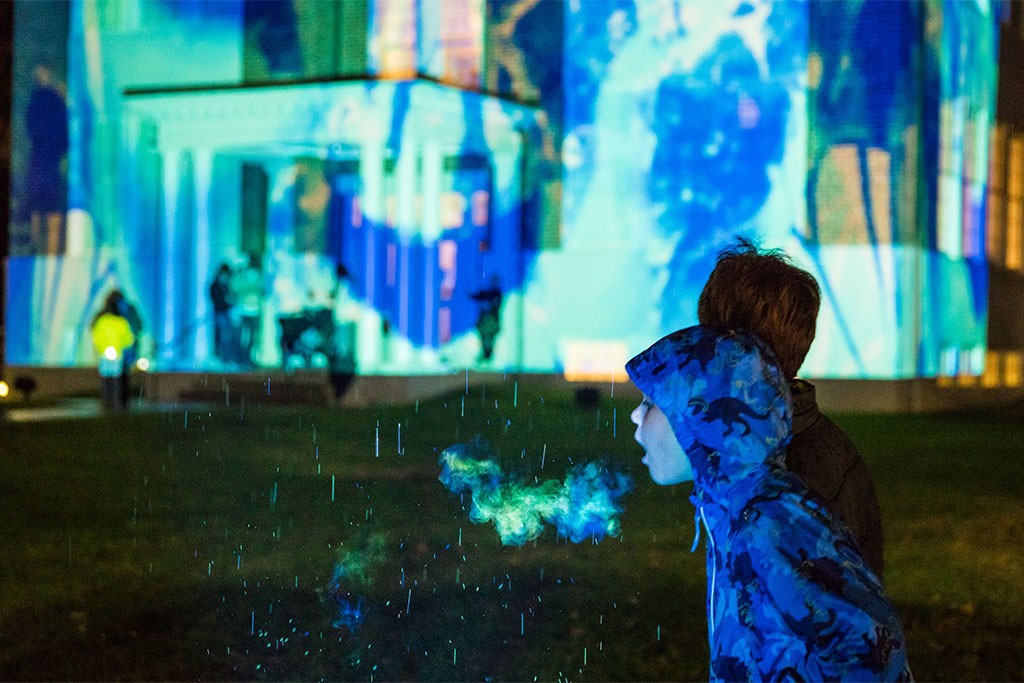This column is written and sponsored by Arlington Arts / Arlington Cultural Affairs, a division of Arlington Economic Development.
The scenery audiences see on stage can be one of the most impressive aspects of a performance, virtually transporting audiences into a different time and space.
But for small and mid-sized presenters, the labor and skill intensive construction of elaborate hand built sets can be cost prohibitive. Arlington Cultural Affairs/Arlington Arts has found innovative ways to bring new advances in digital projection technology to impact performances ranging from chamber music and outdoor festivals, to student productions.
“Projections have opened up an entirely new way for smaller groups to enhance the production quality that was previously unavailable to them,” says Arlington Cultural Affairs/Arlington Arts Theater Technician Andres Luque. “A graphic designer can create either a static or a moving backdrop. We can create the sensation of flying, falling snow, a dense forest or bustling city streets.”
Arlington Arts repurposed projection equipment from larger venues such as the Rosslyn Spectrum Theatre, located in the soon-to-be redeveloped Rosslyn Plaza complex on Wilson Boulevard. Now installed in smaller venues such as Thomas Jefferson Community Theatre, and Gunston Theatre Two, it is having a profound impact on a broad range of ensembles, including Avant-Bard and Dominion Stage.
The impact of the technology isn’t limited to the confines of a theater. For the last few years, thousands of patrons and passersby have enjoyed the 3D Mapping projections on the façade of Arlington Arts Center for their annual Dia De Los Muertos Celebration (coming up on Saturday, November 2).
Last year, in partnership with the Center, Arlington Cultural Affairs/Arlington Arts commissioned artists Mas Paz and Robin Bell to design striking work (in 2017, Bell collaborated with Edgar Reyes). “Using 3-D Mapping technology, we can bend the artists image to create a striking, color-saturated image on the varied surfaces of the building,” says Luque, “all without a drop of paint on the historic brick façade.”
“It’s like being inside an MTV video,” is how a patron described the experience to Leo Sushansky, Artistic Director of the National Chamber Ensemble (NCE). Check out their video clip below from NCE’s May, 2019 world premiere performance of Alexander Goldstein’s “Introspective Piano Trio” for violin, cello, piano and computer.
The Ensemble’s 2019 season begins with a Mozart Celebration on Saturday, October 19, but the season includes an encore presentation of Vivaldi’s The Four Seasons — the work for which they first began using multi-media presentations.
While hearing the familiar music, audiences see images of landscape paintings by Italian artist Marco Ricci that were the inspiration for Vivaldi’s 1725 masterwork. Each concerto also is accompanied by sonnets, believed to be written by Vivaldi himself to accompany the compositions transition between the seasons.
“After seeing the Four Seasons by NCE,” audiences tell Sushansky “they’ll never hear it the same way again.”



